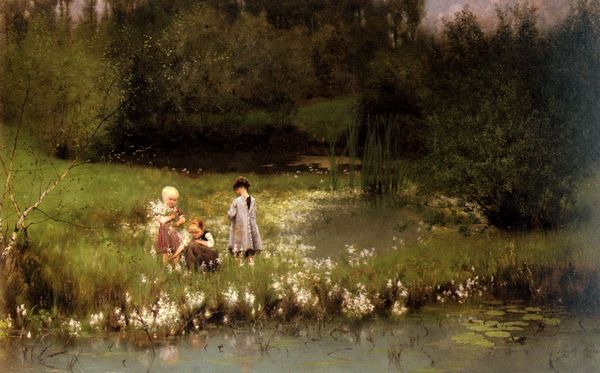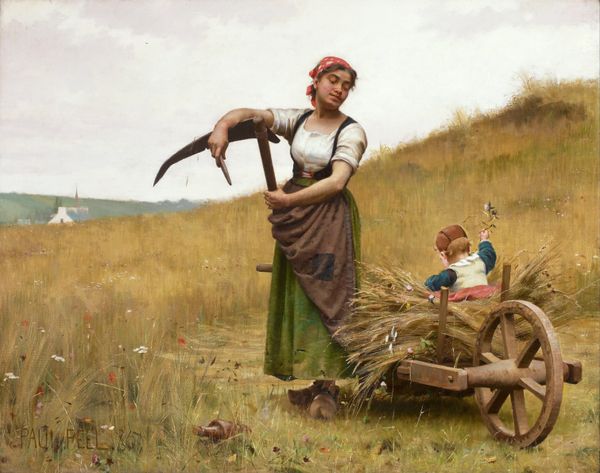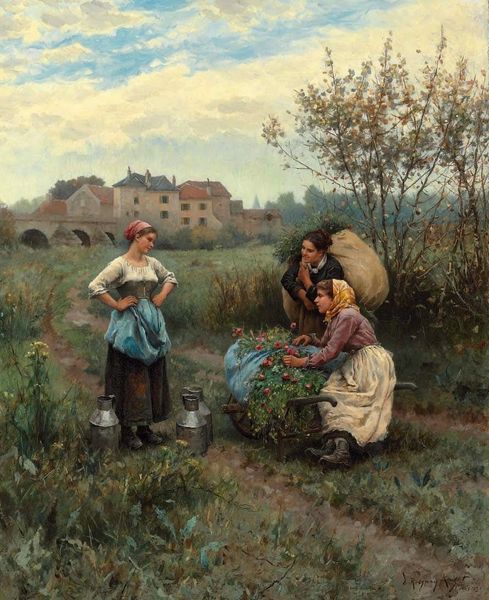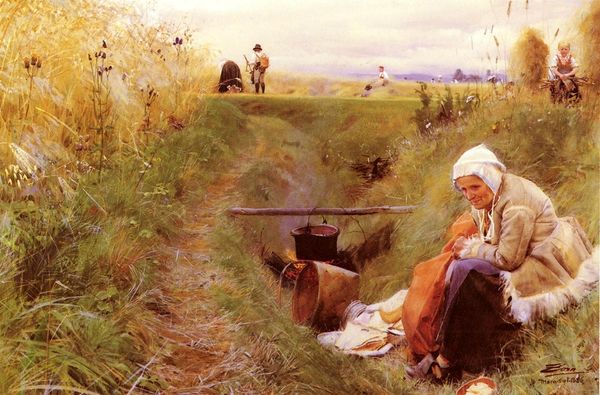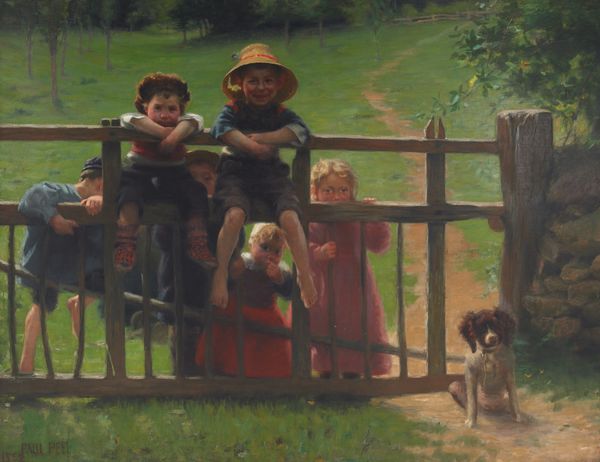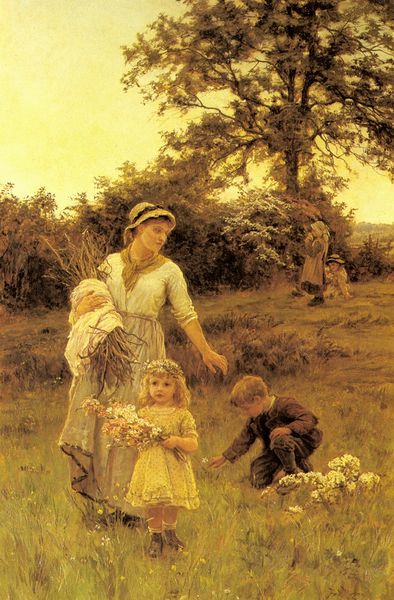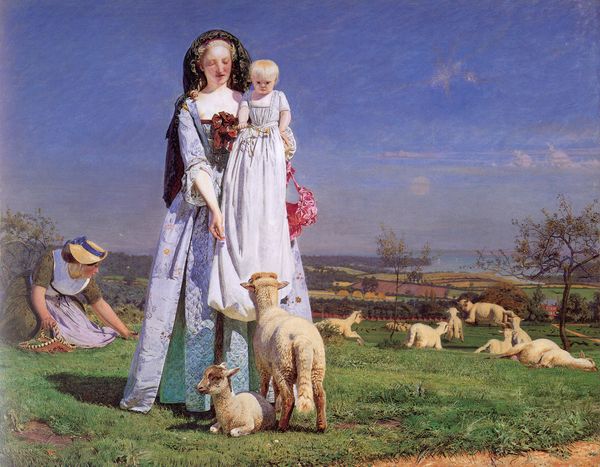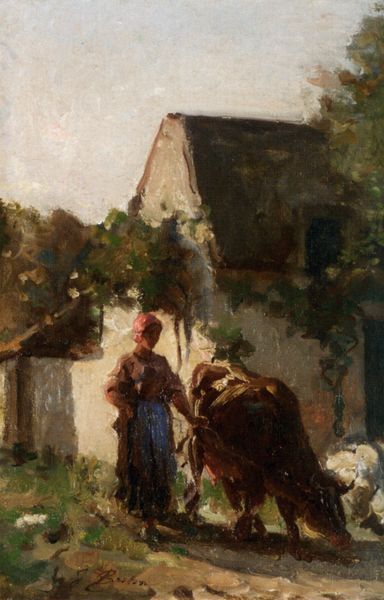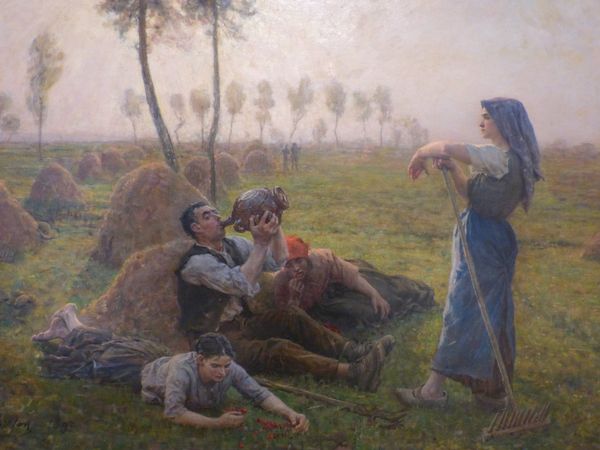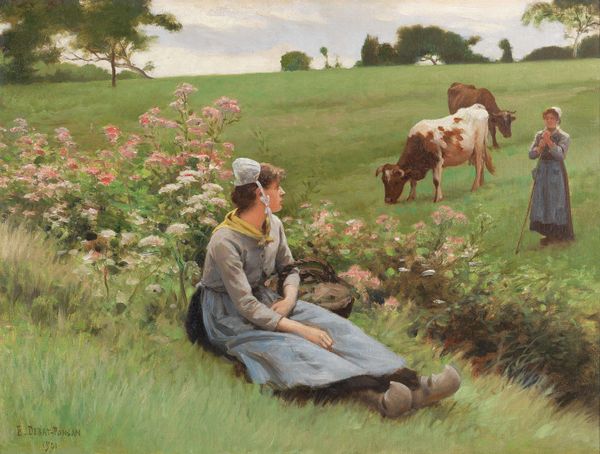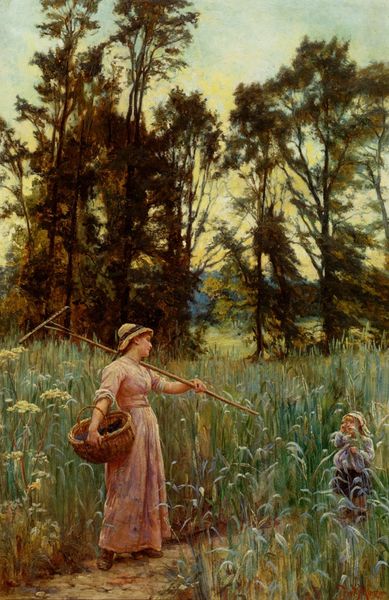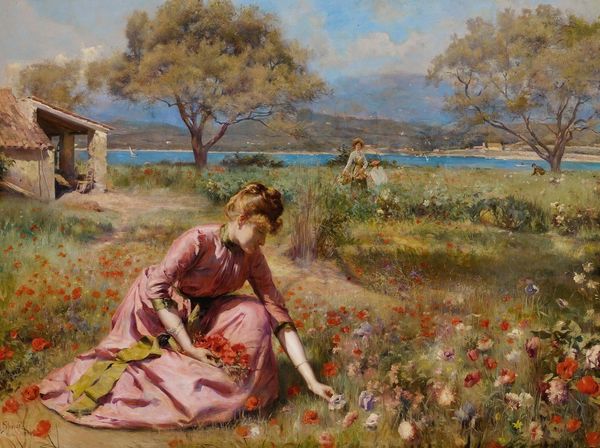
painting, oil-paint
#
portrait
#
painting
#
oil-paint
#
landscape
#
oil painting
#
genre-painting
#
northern-renaissance
#
realism
Copyright: Public domain
Curator: Anders Zorn’s "The Mora Fair," painted in 1892, captures a bustling Swedish market scene, rendered with oil on canvas. The scene is teeming with activity and subtle detail. Editor: There is something profoundly still and quiet, however, to how Zorn presents this lively scene, despite its vibrancy, isn’t there? The muted palette reinforces the earthiness of the composition and focuses the attention on these figures foregrounded in contemplation and exhaustion. Curator: I’d like to delve into the labor evident in this composition, starting with Zorn's mastery of oil paint. The way he captures the textures of the fabric, the sheen on the horse’s coat, demonstrates a dedication to his craft, reflecting the effort embedded in artistic production itself. The layering effect enhances the realism of the overall feel of the landscape. Editor: Note the diagonals, the angles—the path slanting upwards and leading our gaze, drawing us into the deeper narrative planes in the background. The horizontal placement of the man lying on the ground provides a stillness, a grounding force. The vertical line of the church adds a sense of history and context that supports the painting's narrative qualities, framing the foreground of human activity. It has some visual tensions, doesn't it? Curator: This isn't just about form, however. We're looking at a portrayal of labor—the fair itself represents the exchange of goods and services, and the exhaustion on the faces hints at the arduousness of rural life. I can feel their hard labour on my own body! Editor: That exhaustion translates beautifully through Zorn's use of light and shadow. The sun casts elongated shadows on the road, sculpting the figures and creating a dramatic tension that enhances the thematic elements. How each of those figures has its moment with the light. And they are beautiful in themselves. Curator: Zorn was very astute about Swedish life, of course. Let's not forget the economy here: agricultural fairs served as pivotal points of social cohesion and financial opportunity, facilitating the flow of products and funds within the Swedish provinces, thus stimulating the region’s economic growth. The canvas thus materializes how such rural customs strengthened society. Editor: So, where do we land with "The Mora Fair"? Zorn encapsulates fleeting moments and reveals enduring structural qualities. Curator: Ultimately, Zorn compels us to consider the laboring figures who sustain both art and community.
Comments
No comments
Be the first to comment and join the conversation on the ultimate creative platform.

